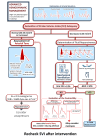Foundations and Advancements in Hemodynamic Monitoring: Part I-Elements of Hemodynamics
- PMID: 40150830
- PMCID: PMC12123657
- DOI: 10.4274/TJAR.2025.251925
Foundations and Advancements in Hemodynamic Monitoring: Part I-Elements of Hemodynamics
Abstract
Standard monitoring guidelines by the American Society of Anesthesiologists and European Society of Anaesthesiology and Intensive Care have not been updated for over a decade, despite rapid advancements in monitoring technology and the growing complexity of surgical patients. Traditional parameters such as blood pressure and pulse oximetry often fail to detect critical intraoperative conditions, emphasizing the need for comprehensive hemodynamic assessment. This review, the first of a two-part series, explores the fundamental elements of hemodynamics, including cardiac output, stroke volume, blood pressure, and oxygen delivery, with a focus on their physiological basis, clinical significance, and perioperative applications. This article provides a detailed foundation for understanding hemodynamic monitoring, setting the stage for the second article, which addresses advanced monitoring tools and their applications in contemporary anaesthesia practice.
Keywords: Anaesthesia monitoring; hemodynamics; intensive care; patient outcomes; perioperative care.
©Copyright 2025 by the Turkish Anesthesiology and Reanimation Association / Turkish Journal of Anaesthesiology & Reanimation is published by Galenos Publishing House.
Conflict of interest statement
Declaration of Interests: The author(s) declared no potential conflicts of interest with respect to the research, authorship, and/or publication of this article.
Figures



References
-
- Chaudhry R, Miao JH, Rehman A. Physiology, Cardiovascular. 2022 Oct 16. In: StatPearls [Internet]. - PubMed
-
- OpenStax. (n.d.). Cardiac physiology. In Anatomy and Physiology 2e. OpenStax. Retrieved January 5, 2025. Available from: https://openstax.org/books/anatomy-and-physiology-2e/pages/19-4-cardiac-...
LinkOut - more resources
Full Text Sources
